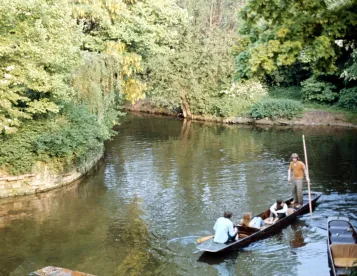This is my penultimate article on the Administration’s final Waters of the US rule. For those of you who have read our previous articles on the proposed and final rules (hi Mom!), you know we have concerns about the significant nexus test. Our concern is not just the breadth of the test, but its ambiguity and need for case-by-case application. For the regulated community, knowing when one must comply with the law is half the battle (at least). And the significant nexus test, based on neither science nor the language of the Clean Water Act, is an ambiguous, case-by case test.
But apart from its ambiguity, there is the practical reality – the practical difficulty – of actually applying the test. Now that the test has been ensconced into regulation, we’ll take a quick look at the practical implications of applying of the test.
As you’ll recall, the significant nexus test requires a determination of whether the water in question – alone or in aggregation with other similarly situated waters in the region – significantly affects the chemical, physical or biological integrity of a traditionally navigable or interstate water or the territorial sea (with “significant” meaning “more than speculative or insubstantial.”). The “region” is the watershed that drains to the nearest traditionally navigable or interstate water or the territorial sea, and waters are “similarly situated” when they function alike and are sufficiently close to function together in affecting downstream waters.
The reality of the Clean Water Act is that the onus is typically on the regulated community to show that a water is not jurisdictional. In a permitting situation, for example, it is incumbent on the permit applicant to delineate waters and wetlands and offer an explanation to the Corps as to which waters are not jurisdictional. In an enforcement setting, the alleged violator typically must make EPA (and the Corps) comfortable that the waters that were filled or polluted were not jurisdictional in order to reduce settlement demands and/or avoid prosecution. Thus, the permit applicant will usually face the onus of applying the significant nexus test.
This means that the applicant will need to:
-
Identify the nearest traditionally navigable or interstate water or the territorial sea. This will require an estimation of what nearby waters are susceptible to “commerce,” including “commercial waterborne recreation such as, boat rentals, guided fishing trips or water ski tournaments.” This is difficult in and of itself, and the applicant will also face a strategic question as to how far upstream to try to identify such waters, because the farther upstream these waters are, the smaller the watershed to be aggregated, but the more area will be subject to automatic jurisdiction.
-
Identify what other waters are “similarly situated.” This requires an analysis of the functions of the waters at issue as well as an understanding of the Agencies’ (as of yet unelucidated) position on the specificity of those functions (for example, all wetlands retain water and sediment – does that mean they all function alike?) and how proximate is “sufficiently close.”
-
Identify other potentially similarly situated waters, most of which will not be on the applicant’s property. This will likely need to be done by aerial photography, at least at the preliminary, desktop level. There are not a lot of aerial photography wetland delineation experts in the country, particularly ones with whose conclusions the agencies will always agree.
-
Determine the size and function of these photographically-identified similarly-situated waters (and most likely, also determine in reality if they are actually similarly situated). This may need to be done by obtaining access rights to the applicants’ neighbors in the region. This is typically difficult enough in normal circumstances; here the difficulty will be compounded by the fact that the applicant in essence is going to be proving that its neighbors’ waters are themselves jurisdictional.
-
Pay a contractor to prepare a lengthy report summarizing all of the above, probably with the assistance of an attorney, given the complexity of the rule being applied.
That’s a long and onerous list. As we’ll discuss tomorrow in our last post, we think the practical implication of this reality will be that many permit applicants will choose to concede jurisdiction rather than spend the time and money trying to apply the significant nexus test.



 />i
/>i
